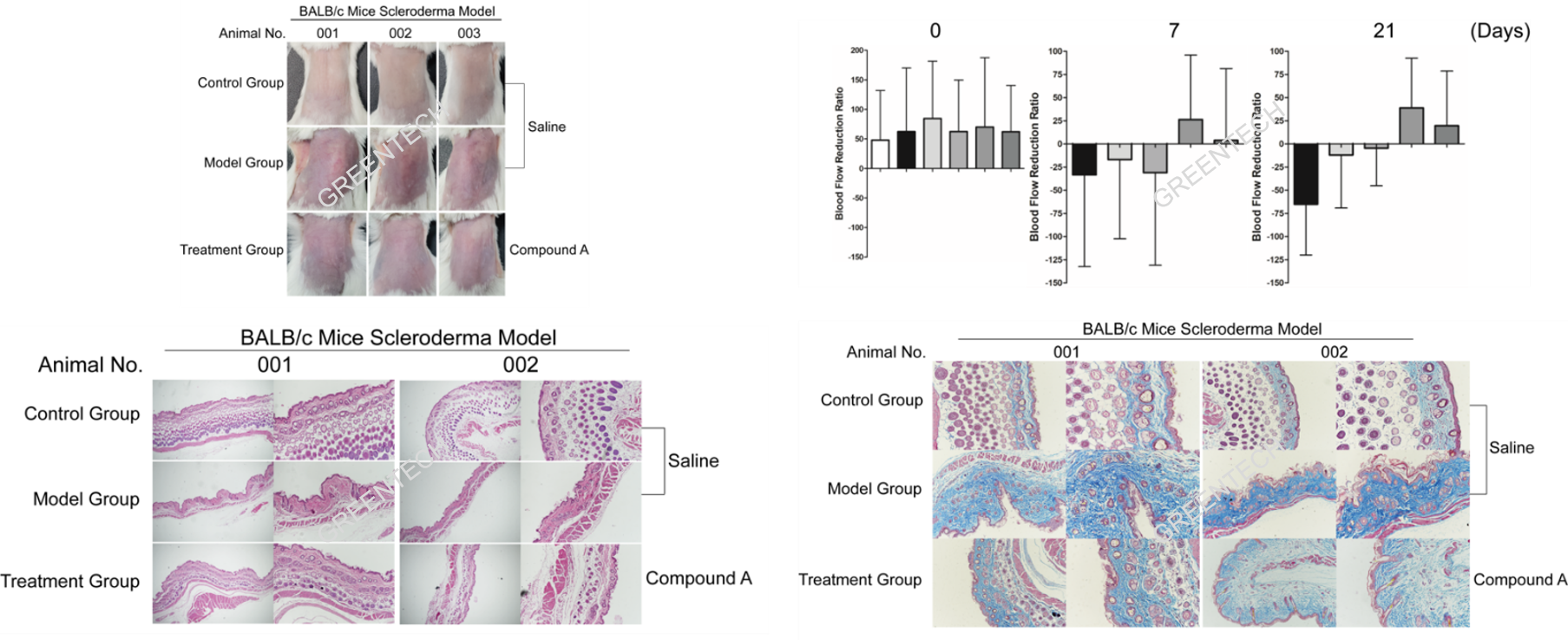Model of Systemic Sclerosis (SSc)
Systemic sclerosis (SSc), also known as scleroderma, is a chronic disease characterized by hardening, thickening and fibrosis of the skin. There is currently no cure for this disease. Greentech Bioscience offers bleomycin-induced animal model of systemic sclerosis for preclinical drug efficacy testing.
Bleomycin-Induced SSc Mouse Model
Bleomycin (BLM) belongs to a subfamily of glycopeptide antibiotics and is currently used in anticancer therapy. In vitro assays showed that BLM could trigger hyperexpression of collagen and fibronectin genes in skin and lung fibroblasts. The bleomycin induced SSc model has been widely used in the study of pathogenesis and preclinical efficacy testing. The animal model of scleroderma is induced by repeated intradermal injections of BLM into the central back of mice for several weeks, leading to progressive thickening of the skin at the injection site. The bleomycin-induced scleroderma in mice is an easy, reproducible model that can be used to test the efficacy of novel therapy against SSc.
Model Characteristics: spinous layer hyperplasia, dermis thickening, collagen fibers thickening, hair growth decreasing, fat layer thinning to disappear, inflammatory cell infiltration, etc.
Clinical Assessment
(1) Histopathology: H&E, Masson, Toluidine blue staining
(2) Immunostaining: TGF-β
(3) Hydroxyproline content
(4) Serum ANA/ENA testing
Case Study
Bleomycin-induced scleroderma mouse model

Reference
Błyszczuk P, et al. Experimental Mouse Model of Bleomycin-Induced Skin Fibrosis. Curr Protoc Immunol. 2019 Sep;126(1):e88. doi: 10.1002/cpim.88.
Inquiries
Request a quote now, or email us at BD@greentech-bio.com to inquire about our services or obtain a quote for your project.












